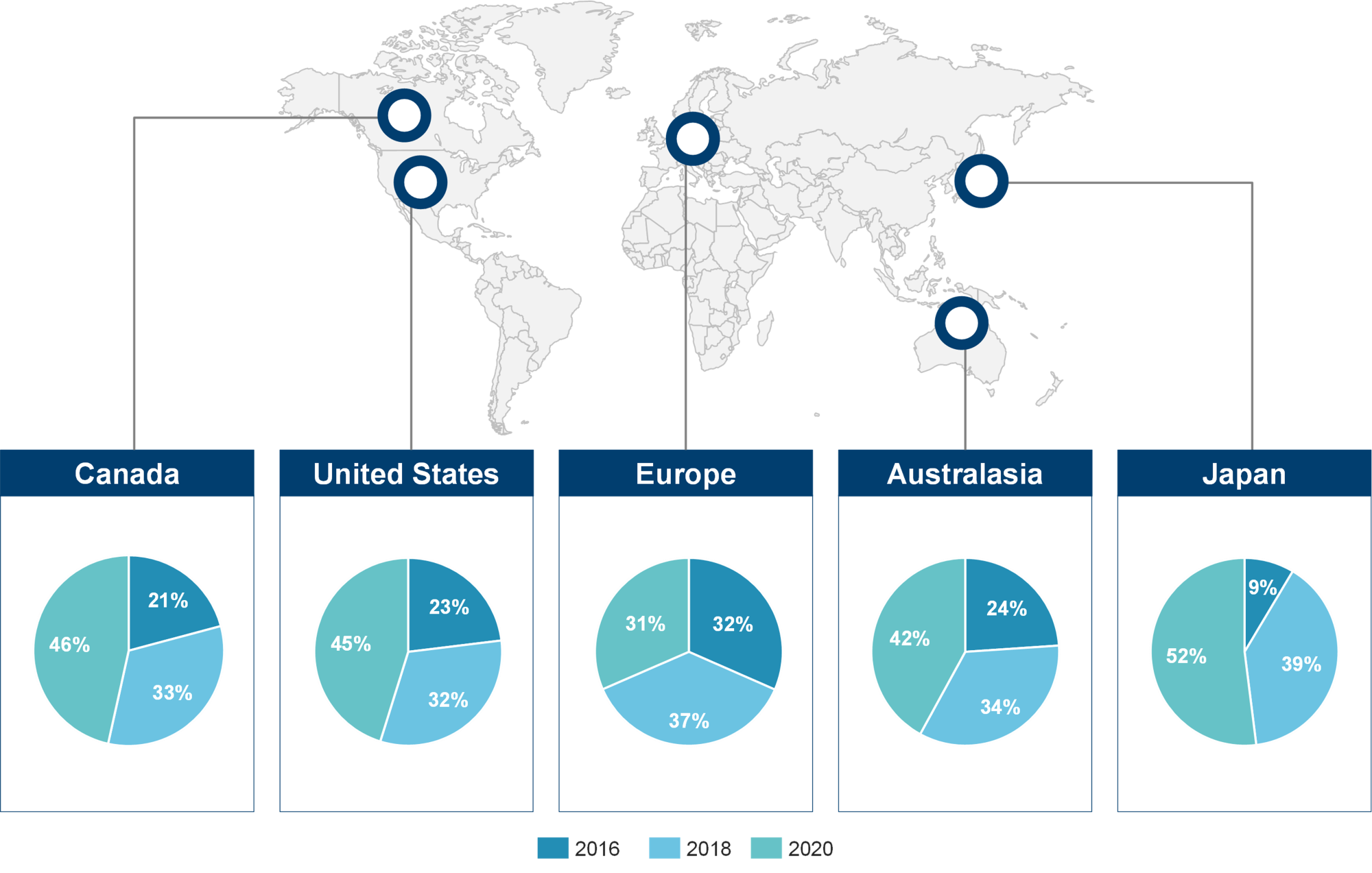The Other Side of ESG Investing
Published on 06 Jun, 2022

Environmental, social, and governance (ESG) factors play a critical role in investment analysis, actions, and recommendations. Globally, investors are looking at different methods such as positive or negative screening, green finance, thematic investing, shareholder engagement, and activist ownership to include ESG factors. Sustainable investing is the new buzzword for successful investing. However, various private ESG data providers use inconsistent scoring approaches or inappropriate constraints and assumptions. Lack of standardization and transparency makes it tough for investors and analysts to determine the effectiveness of ESG scoring. Additionally, companies having a low environmental score, owing to uncertain emissions reduction targets, but a high social and governance score may not be considered ESG compliant by a few market participants. This lack of uniformity has given rise to issues such as greenhushing and greenwashing.
Sustainable investing has gained popularity as an increasing number of institutional investors are acknowledging the ESG factors as value creators. ESG has become the new buzzword in responsible investing as a growing number of market participants are considering impact investing. Investment giants such as Blackrock, Vanguard, Japanese Government Pension Investment Fund, and Norwegian Government Pension Fund Global have been practicing sustainable investing for a few years now. In March 2022, the Japanese Government Pension Investment Fund moved a step forward by adopting an ESG Index for Japanese equities. However, ESG disclosures are not standardized and unform across companies and sectors; this could become a major threat to effective ESG disclosure for businesses. Majorly, ESG disclosures have guidelines that vary across firms, making it challenging for various stakeholders to evaluate opportunities effectively and fairly. This lack of uniformity has given rise to issues such as greenwashing and greenhushing. Theoretically, ESG factors provides investors with insights into a company’s exposure to various ESG risks. Companies with a low carbon footprint, active employee engagement and welfare goals, competent management, and sound corporate governance tend to outperform the market in the long run.


As per Global Sustainable Investment Review 2020, global sustainable investment reached approximately USD35.3 trillion in 2020 in five core markets: Europe, the US, Canada, Australasia (Australia and New Zealand), and Japan. It surged 15% during 2018–20 as sustainably invested assets continued to grow globally except in Europe, due to the EU legislation in this region, making past comparison difficult.
Greenwashing
As ESG factors became popular and the need for companies to become ESG-friendly rose, companies started resorting to greenwashing. Greenwashing is a practice wherein companies convey false claims and impressions about the sustainability component of products. A firm may spend resources falsely marketing its products as green, to portray itself as a environmentally and socially responsible player. Furthermore, its green targets may be vaguely set or too ambitious to achieve. Oil and gas companies are well known for greenwashing. Researchers at Columbia University found that investors are frustrated due to the environmental disclosures made by American oil and gas firms such as questionable claims. Inadequate government regulations add to this. BP, for instance, rebranded from British Petroleum, created the ‘Beyond Petroleum’ slogan and changed its logo to portray itself as an environment-friendly company. However, even today, BP derives most of its revenues from oil and gas. BP is also embroiled in the controversial oil spill in the Gulf of Mexico. As awareness spreads, many companies are being accused of greenwashing.
Greenhushing
When companies adopt sustainable practices but do not report them, it is called greenhushing. To avoid being accused of greenwashing and the scrutiny that follows, businesses are intentionally not publicizing the sustainable initiatives they implement. A survey was conducted on 2,000 hotels across 44 nations and the results have been included in Green Lodging Trends Report 2016. As per the report, most of the hotels adopted sustainable practices such as using LED lights, reusing water, reducing water consumption, recycling, and using certified green products. However, only half of them advertised these initiatives. Moreover, companies need to incur high costs and put in considerable efforts to obtain a certificate that can vouch for their green initiatives; this forces them to practice greenhushing.
When companies practice greenhushing, they fail to inspire their competitors to make a greener change, and to act as a role model. They may also miss out on investments from ESG-conscious investors and loyalty from ESG-conscious customers.
ESG Purists Versus PragmaticsIt is worthwhile to consider the case of Danone to explore the issues arising from discord between sustainability pioneers and profit-seeking stakeholders. Danone SA, a global food and beverage company, operates through four business segments: Dairy, Plant-Based Products, Specialized Nutrition, and Waters. In 2021, Danone’s Board ousted CEO Emmanuel Faber under pressure from activist shareholders such as Bluebell Capital Partners and Artisan Partners. Faber was one of the leading executives who constantly promoted stakeholder capitalism and ESG-based sustainability across core business units. His departure uncovered disagreement between advocates of sustainable capitalism and resilient corporate activists.

The rebased comparison is a depiction of Danone’s uninspiring performance against the MSCI Europe Consumer Staples Index, which consists of peers, over the last five years. The black line indicates the period in which Faber was appointed as the CEO of Danone. The gap between the index and Danone’s performance widened after Faber’s appointment.
Faber’s sustainable way of doing business came under scrutiny when the company reported poor sales and margins compared to competitors. Under Faber’s tenure, Danone’s fresh dairy segment had global leadership, and its special nutrition and bottled water segments dominated the global market share. Faber introduced the concept of carbon-adjusted earnings per share. To make Danone a purpose-driven company, he launched "One Planet for Biodiversity" initiative to promote international cross-sectorial and action-oriented business partnership on biodiversity. However, his ESG-focused strategies failed to impress the likes of activist shareholders.

According to former Unilever CEO Paul Polman, aiming for sustainability is not good enough as companies may not be able to generate profits from solving world problems. In his book titled Net Positive: How Courageous Companies Thrive by Giving More Than They Take, Paul argues that sustainability is not good enough as companies have started to understand the need to be restorative, reparative, and regenerative. He states that net positive leaders take responsibility for their cumulative impact on the world; such leaders promote transparency and target cooperative leadership. The world’s problems are too big for a single company to solve.
EU Taxonomy for Sustainable Activities
There are multiple private ESG data providers who use non-standardized scoring methodologies, or factors and assumptions which may not be wholly transparent. Furthermore, ESG data such as the level of carbon emissions may not be available for all firms. This reduces the relevance of ESG scores (for investors). To help solve these issues, the EU taxonomy for classifying and establishing environmentally sustainable activities has been established. The system helps firms and stakeholders differentiate between green and non-green assets.
Asset managers are required to disclose the percentage of products which are green as per the taxonomy. Moreover, European companies are required to report the share of revenues and capital expenditures in compliance with the taxonomy. This classification also applies to the green bond issues in the EU.

The EU taxonomy has the potential to become a global standard. As per a Berenberg ESG survey, after the taxonomy labelled nuclear energy as green, the number of funds excluding nuclear power in their ESG criteria dropped from 43% in 2021 to 37% in 2022. Firms outside the EU may adopt the taxonomy as their EU clients demand correct data from them for their own disclosures.
Road Ahead
ESG factors play a critical role in companies’ decisions on mergers, acquisitions, divestitures, etc. Regulators and policy makers expect the corporate sector to address issues such as environmental pollution and lack of diversity at the workplace. However, ESG regulation as well as analysis needs a focused consideration as the one-size-fits-all approach for evaluating companies may not help. For instance, a conglomerate operating a tobacco business despite being well governed may receive a negative score if its tobacco business is a major revenue generator. Similarly, a retail outlet selling FMCG goods in a highly sustainable environment may receive a negative score if it sells tobacco and related products. Just a handful of organizations cannot bring about a social change. A profitable entity can afford to focus on transformation as it can offset the associated costs through economies of scale. It would be interesting to see how a small-scale business unit implements sustainable practices and thrive economically.

